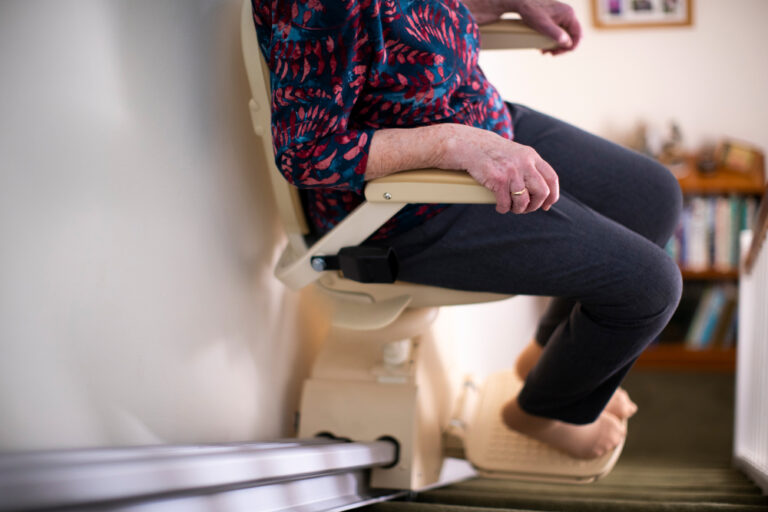Most of us use staircases every single day. The seemingly simple act of walking up and down a flight of stairs, however, is not so simple to many. For both seniors and individuals with mobility issues, a stair climb can be a scary situation. The Canadian government reports that “seniors are more at risk for falling on stairs than younger adults, and more likely to suffer severe injuries. In fact, seniors 65+ account for 70% of the deaths resulting from stair accidents.”
So, with pun intended, what steps should be taken to make your home’s staircase a much safer place?
Remove any and all tripping hazards.
What may appear like a no-brainer is actually an important-to-announce tip. For some reason, some people use their stairs as storage areas. Let us be clear. Shoes, clothes, books, toys – these items don’t belong on the steps at any time. They all create tripping hazards. Be absolutely sure to keep your steps completely clear of anything that can be stepped on.
Home inspection providers, MACJ even recommend clearing items away from being around stairways. “If electrical cords are left open, use some tape to pin electrical cords along the baseboards, so that it is out of the way,” they advise, “Furniture near or on the landings should be rearranged to keep pathways free.”
Memorize the number of steps you have.
Every so often, we misjudge the number of steps we have to ascend or descend. Have you ever gotten to the bottom of the stairs and taken that one extra step onto a level surface? It can cause a bit of a trip and even some back pain to go along with it. Firstly, always look where you are stepping. Secondly, memorize your stairwell’s step number. It will help with regular safe stair use and the avoidance of “air steps”.
“A significant number of ‘air step’ falls – stepping off the top of a stairway into air – occur on low stairways that consist of one, two or three steps,” notes Wayne Maynard and George Brogmus contend on EHSToday.com, “In effect, people step off into thin air, not having seen the stair or stairs at all. Commonly found inside public buildings such as hotels and restaurants, ‘air step’ falls occur because people fail to perceive the modest change in floor level and are usually the most serious accidents on low stairways.”
Use those handrails.
Handrails come in various colours and designs. However, their purpose is far greater than being aesthetically pleasing. As their name clearly connotes, handrails are designed for stair climbers to hold on to with their hands. This, of course, helps to keep people steady and well-balanced. As MACJ reminds us, handrails greatly reduce the chances of falling and are strongly recommended, regardless of the number of steps.
“Stair rails protect pedestrians from falling off the edge of the stairs or landings while handrails help pedestrians keep their balance and provide leverage when ascending or descending stairs,” they explain, “You need to install stainless steel handrails that are slip-resistant because they can provide you utmost support and they need less maintenance cost. And, if you already have handrails, check its functionality.”
At LifeCare Mobility Solutions, we believe that stair lifts are the perfect solutions for households that inhabit elderly and/or mobility-challenged individuals. To learn all about the stair lifts we offer, please don’t hesitate to call us at 416-267-9800 or email us at info@lifecaremobility.ca. You may also contact us by filling out the form on our Contact page!










